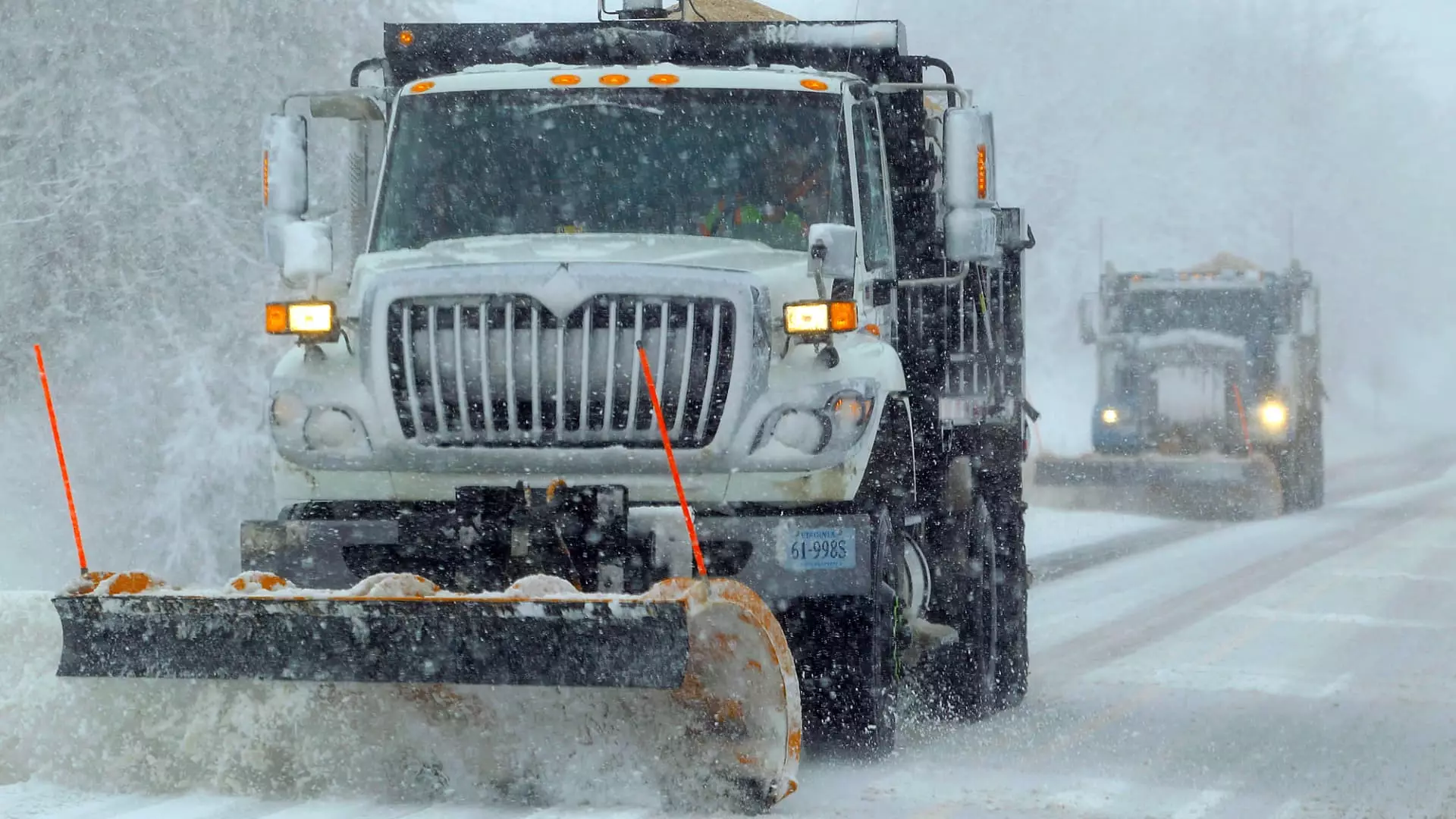As the nation braces for a monumental winter storm, the effects are expected to be felt across an extensive swath of the United States. Tens of millions of Americans are on high alert as forecasts predict a severe drop in temperatures combined with potentially record-breaking snowfall. This article delves into the intricacies of the current weather crisis, the phenomenon behind it, and the repercussions expected for everyday life.
At the heart of this tempest lies the polar vortex, a significant climatic pattern that emerges from low-pressure systems which can exert powerful influence over temperature and weather conditions. Typically, the polar vortex circulates in a stable manner around the poles. However, disturbances in this pattern can result in lobes of cold air spilling southward, affecting regions far removed from the Arctic. The current storm is a classic example of such an event, with states like Kansas, Arkansas, Kentucky, and Virginia declaring states of emergency as a result of their anticipated encounters with intense cold and snow.
The nature of the polar vortex means that while southern states usually experience milder winters, they are now faced with dangerously cold temperatures and the threat of icy conditions, as indicated by alerts issued by the National Weather Service. The ability of the polar vortex to disrupt typical weather patterns underscores the complexities of climate systems and their far-reaching ramifications.
With the storm’s trajectory shifting eastward, nearly 60 million Americans across thirty states are currently under some form of weather alert. Kansas City International Airport exemplified the impact of the storm, closing its runways briefly as crews scrambled to clear the heavy snow and ensure safety for air traffic. A specific incident of note involves an 18-mile stretch of Interstate 70 being closed, demonstrating the storm’s severity and the need for precautionary measures to ensure public safety.
Predictive models indicate that northeast Kansas and north-central Missouri may experience unprecedented levels of snowfall, with estimates suggesting over 15 inches could fall in some localized areas. These volumes have not been seen in a decade, and the National Weather Service has issued warnings that imply considerable disruptions to daily life. Transportation will almost certainly suffer, with forecasts predicting “dangerous or impossible driving conditions” through the storm’s duration.
In anticipation of these harsh conditions, cities like Cincinnati, Chicago, and St. Louis have proactively prepared by treating roads and establishing warming centers for citizens at risk of being stranded. The scope of preparedness is vital not just to minimize the physical impacts of the storm, but also to ensure the safety of less experienced drivers who may find themselves in unfamiliar situations.
Blizzard warnings, covering vast areas, indicate the likelihood of reduced visibility and strong winds. Such measures serve to advise residents to take essential precautions to stay safe. Meanwhile, as conditions advance further east, major urban areas, including Washington, D.C., Baltimore, and Philadelphia, are readying themselves for a significant snowfall. With forecasts suggesting 5-12 inches of snow, public services are gearing up to respond effectively to what could be a crippling weather event.
While northern regions prepare for snow, southern states must brace for a different set of dangers. The impending winter storm forecasts a severe risk of thunderstorms and potential tornadoes in places like Mississippi and Louisiana. This duality of weather highlights the unpredictability inherent in winter storms, reminding us that severe weather does not conform to regional expectations.
The anticipated flight disruptions add further complexity to an already precarious situation, with nearly 7,000 delays reported nationwide on the weekend leading up to the storm. Major airlines have taken steps to mitigate the chaos by waiving change fees, showing a commitment to passenger safety and acknowledgment of the unavoidable challenges ahead.
Once this storm passes, the aftermath presents its own set of challenges. A significant temperature plunge is forecasted for the eastern two-thirds of the nation, with highs expected to be far below seasonal averages for several days. The northern Plains could see overnight lows plummet to nearly minus 20 degrees, presenting serious risks not just for transportation but also for public health and safety.
Cold weather advisories issued from eastern Montana to Minnesota reflect the seriousness of this ongoing winter weather pattern. As communities prepare to endure frigid conditions, they must also consider how best to support the most vulnerable members of society, reminding us all of the importance of community resilience in the face of natural challenges.
This winter storm is a potent reminder of the powerful forces of nature that can impact our lives. As we navigate through these turbulent conditions, the significance of preparedness, community response, and public safety cannot be overstated.


Leave a Reply